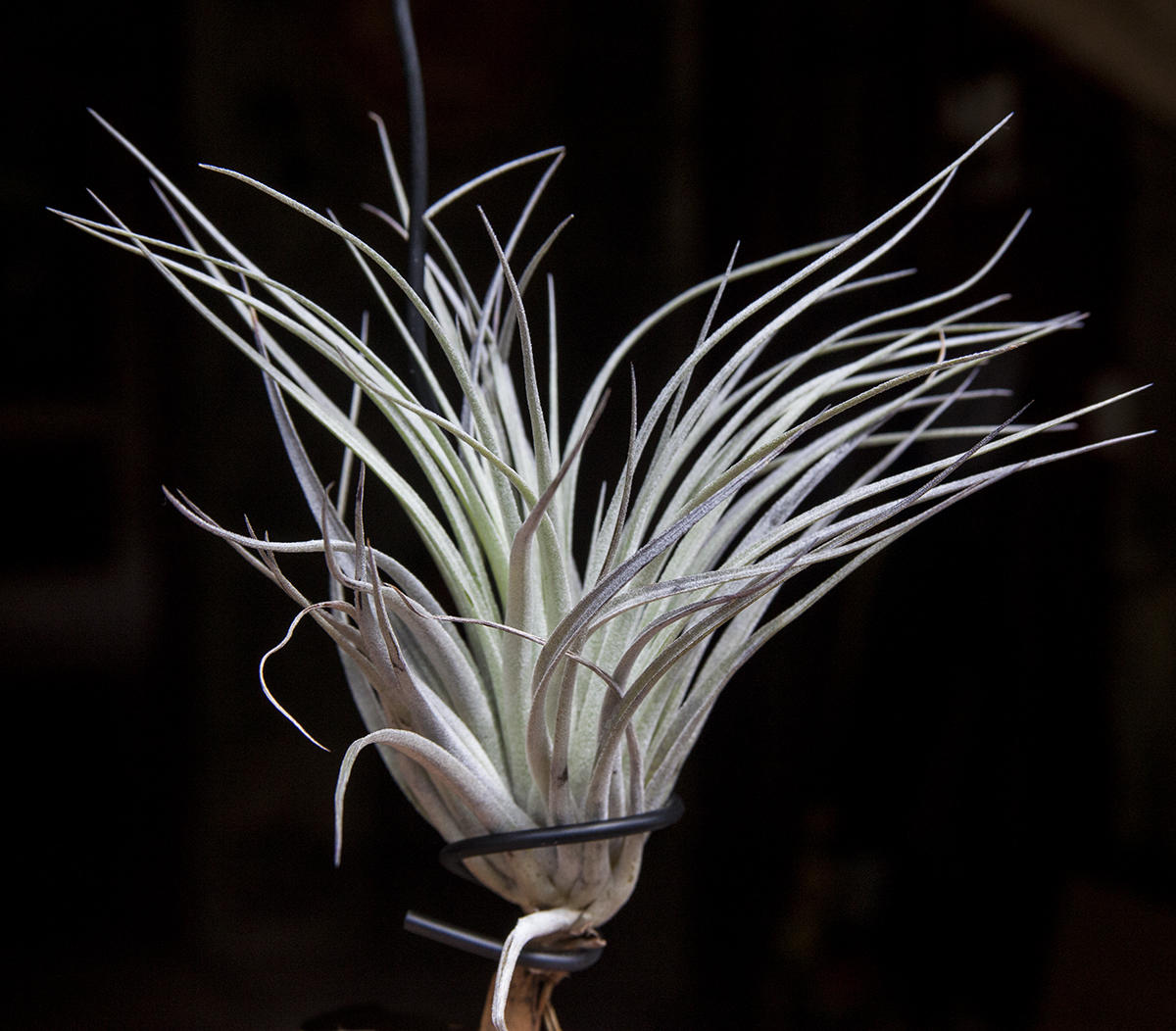|

.
|
Family: Bromeliad
Sub-Family: Tillandsioideae:
Genus: Tillandsia
Sub-Genus:
Native distribution: Its distribution covers many hundreds of square kilometres. Argentina (Chaco, Corrientes, Entre Ríos, Formosa, Jujuy, Misiones, Salta, Santa Fe, Tucumán), Brasil (Rio Grande Do Sul), Paraguay (Alto Paraguay, Amambay, Central, Cordillera, Guairá, Ñeembucú, Paraguarí, Presidente Hayes), and Uruguay (Artigas).
Habit: Tillandsia meridionalis is hardy and grows well under a myriad of conditions. A typical Tillandsia meridionalis habitat is the Great Chaco region of Paraguay and Argentina, both in hygrophilic and dry forest dominated by Prosopis spp.. This area receives precipitation only two or three months a year, but torrential rains submerge the ground in large areas for weeks at a time. The terrain is mainly populated by scattered scrub bushes and trees. Tillandsia meridionalis grow epiphytically on other plants upon which they depends for mechanical support but not for nutrients, they fix on horizontal branches, on forks, cracks and thick bark where organic debris and atmospheric dust accumulate, they are also found on wires and cables where they may receive more light. Tillandsia meridionalis grows along with Tillandsias vemicosa Baker and the more noticeable Tillandsia duratii. Tillandsia meridionalis tends to grow singly or in small groups.0-2200 metres above sea level.
Foliage: Stiff, grey and recurved. Tillandsia called "air plants" absorb water and nutrients from the atmosphere. The foliage is covered by dense specialized peltate scales, which increase the reflection of sun radiation (decreasing the temperature) and permit the absorption of water and nutrients from the atmosphere. The peltate scales act as unidirectional water valves. They are capable of absorbing all the leaf surface water in liquid form, especially from the evening dew.
Flowers: The scape is slender and long enough to exsert the simple inflorescence above the leaves. The imbricate, polystichous, and subglabrous floral bracts are bright carmine. Gradually the bracts open out and back while the white corollas emerge. The three petals of the corolla form a small tube with flared tips.
Seed:
Pups:
Cultivation: Tillandsia meridionalis is easy to grow, drought tolerant, and will thrive within a broad latitude of care conditions
Fertilization: A mist every week with Epiphyites Delight or Epsom salts during the growing season will help the plant.
( Epiphyte’s Delight fertilizer was developed for a special reason. Nitrogen promotes foliar growth. If you have Tillandsias, Orchids, or other epiphytes and you feed them, take a look at the nitrogen content. If it’s high in urea, the plants can’t use it because the urea needs a bacteria in soil to break it down into ammonia and nitrates. Since the epiphytes don’t have any soil they can’t break down the urea. It was for this reason that we had Epiphyte’s Delight formulated. It contains only ammoniacal and nitrate nitrogen which is immediately accessible and usable by the plants.)
Availability:
|